#pitchblende
Text
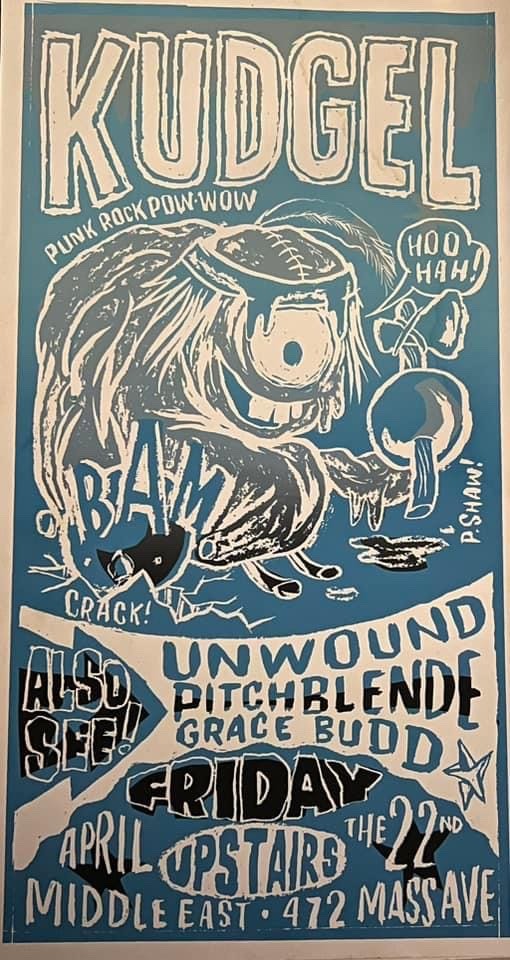
1994
2 notes
·
View notes
Photo

“Radium To Remain In Private Hands,” Toronto Star. May 25, 1932. Page 9.
----
Government Declines to Nationalize Deposits of the Precious Substance
----
Special to The Star
Ottawa, May 24 - Senator McRae’s efforts to have the radium deposits of Canada nationalized have not met with the approval of the government. The matter came up in the House yesterday and the minister of the interior intimated that the government was not disposed to interfere with the private interests in this natural resource. The deposits so far discovered are in private hands and there is no commercial plant in Canada for the reduction of the ore.
Recent deportation incidents came up when J. S. Woodsworth read a telegram from the wife of a man who had been arrested in Montreal and taken to Halifax. The minister of labor declared there was an indifferent percentage waging war against Canadian institutions. They would be given fair trial and all rights under the law, but the law would be carried out.
When the Indian affairs estimates were up Hon. Ernest Lapointe, former minister of justice, put in a claim that Quebec was entitled to $300,000 from the sale of Indian lands. The federal government said it was holding the money in trust for the Indians, but as soon as the lands were sold the proceeds belonged to the provincce, maintained Mr. Lapointe.
The highly contentious trio of insurance bills had rough sailing. There were many minor amendents. Mr. Lapointe wanted to know how the provinces viewed the bills, fearing they would be declared ultra vires. The minister of finance assured him the provinces viewed the measures with approval.
In the Senate Hon. Rodolphe Lemieux asked for information on the report that the Prince of Wales would open the Imperial conference. Hon. F. B. Black, acting leader, could give no information.
#parliament of canada#parliamentary debate#canadian politics#radium#port radium#nationalization of resources#strategic resources#resource extraction#resource capitalism#pitchblende#great slave lake#birth of the atomic age#settler colonialism in canada#far north#deported from canada#bennett government#iron heel#anti-communism#j. s. woodsworth#ernest lapointe#great depression in canada
3 notes
·
View notes
Text

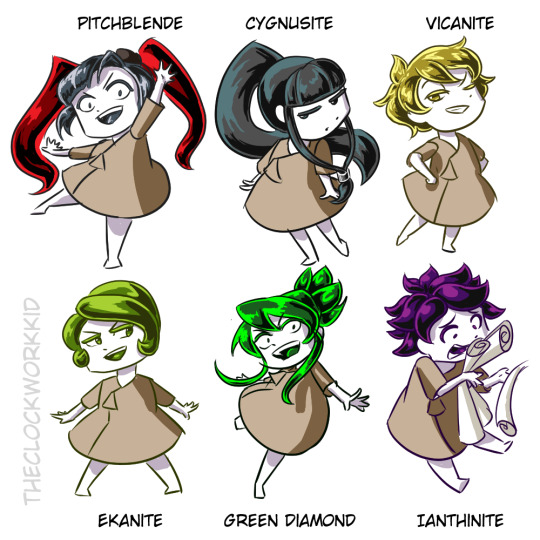

(LotL OC) Chibis of all my radioactive Gems. Technically a redraw although I didn’t get to them all last time. (link to old one)
All of them are radioactive and live on their separate island with no knowledge of the first. They can irradiate things around them to various degrees, but don’t suffer any harm from it.
But yeah they’re all labelled.
#land of the lustrous#houseki no kuni#lotl ion#lotl chernobylite#lotl curite#lotl vicanite#lotl ekanite#lotl verrite#lotl astrocyanite#lotl blue topaz#lotl trinitite#lotl pitchblende#lotl cygnusite#lotl green diamond#lotl ianthinite#lotl thorianite#lotl autunite#lotl monazite
76 notes
·
View notes
Text
nobody understands how much I love Marie Curie. She is my idol, a lighthouse in the stormy night, the astatine within the earth’s crust, the glimmer of galaxies millions of light years away, the radium salt to pitchblende, an absolute girlboss

#marie curie#science#radium#polonium#radioactivity#I’m radioactive just thinking about her#chemistry#nerd shit
63 notes
·
View notes
Note
U
is for ✨uranium✨
GASP, I DIDN'T KNOW! /s

Have some facts about my favourite element:
Uranium occurs in most rocks in concentrations of 2 to 4 parts per million & is as common in the Earth's crust as tin, tungsten & molybdenum! Uranium also occurs in seawater & can be recovered from the oceans.
It was discovered in 1789 by Martin Klaproth, a German chemist, in the mineral called pitchblende. It was named after the planet Uranus, which had been discovered eight years earlier.
Uranium was formed in supernovae about 6.6 billion years ago. While it is not common in the solar system, today its slow radioactive decay provides the main source of heat inside the Earth, causing convection & continental drift.
The high density of uranium means that it also finds uses in the keels of yachts & as counterweights for aircraft control surfaces, as well as for radiation shielding. It's 18.7 times more dense than water! Not to forget that its isotope U-235 is used for transforming thermal energy into electrical energy.
Uranium has a melting point of 1132°C.
Thank you for your inbox, I know you like my chemistry infodumps @jelluu ✨
#donnie speaks#donatello infodumps#donnies exceptional mind#turtle net#rottmnt#rise of the teenage mutant ninja turtles#rottmnt donnie#rottmnt donatello#rise autistic donnie#rottmnt autistic donnie#uranium#chemistry#autistic donatello#autistic donnie#science infodump#infodumping
61 notes
·
View notes
Text

hard as steel
"Pitchblende and Uraninite, the most important world sources of Uranium, are heavier than iron and as hard as steel."
October 1954
Quote taken from original text included with the image in the magazine
11 notes
·
View notes
Text
“Wait, if Yatagarasu is the god of fusion, why does okuu have fission powers as well?”
“Apparently former hell is carved from pitchblend and she’s a hungry girl.”
9 notes
·
View notes
Text
Abstract Concrete! Population II! Th' Faith Healers! Polvo! Stereolab! Moonshake! Long Fin Killie! ...And You Will Know Us By The Trail Of Dead! The 3Ds! Archers Of Loaf! Pitchblende! Laurels! Helium! Superchunk! Sebadoh! Pavement! U.S. Maple! Dinosaur Jr.! Dadamah! Nirvana!
3 notes
·
View notes
Text
dream: drove out to the deep country for a funeral, abandoned vehicle and walked to a mansion I had legal right to but it was occupied by hippies/cultists, fell in with them, drank from a vessel that used to contain pitchblende (uranium), followed a riverbed finding coins and effects relating to lunar worship, came to a cliff side some saturnalian rite occuring there and fell off the cliff awakening before the canyon rocks killed me
39 notes
·
View notes
Text
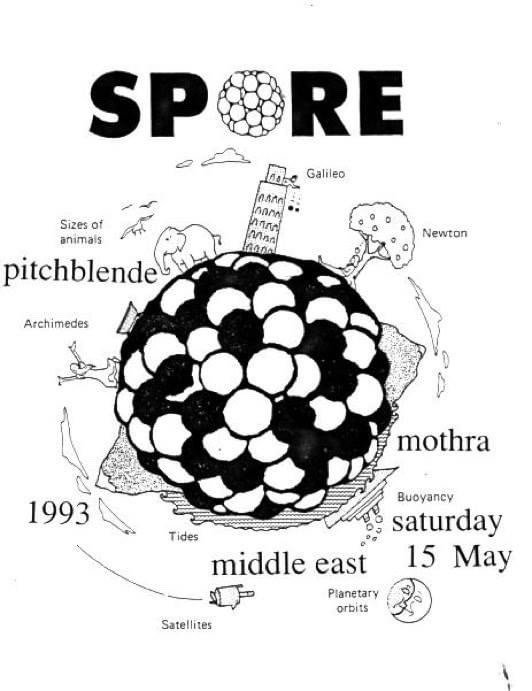
1993 - Pitchblende + Mothra + Spore
7 notes
·
View notes
Photo

“Slow Matter To Get Radium,” Kingston Whig-Standard. February 3, 1933. Page 13.
---
Refiners Work for Months to Extract Grains From Bulk Pitchblende
---
By JACK HAMBLETON
(Canadian Press Staff Correspondent)
PORT HOPE — It takes a long time to produce radium from pitch-blend even though the ore is the highest grade radium ore in the world. At Canada's only radium refinery here, scientists work for many days to bring forth in a thimble-like container, the valuable salt which is used for cancer treatment.
Away up on Great Bear Lake, just outside the Arctic Circle miners are steadily digging the ore. It is often 40 below up there and the days are short. When the ore is produced, it is shipped to Port Hope in laborious manner, for transportation is not easy under the northern lights.
But even after its arrival here, it is a long time before the tiny surgical needles are filled. M. L. Portion, French chemist, who is in charge of the refinery here, explains.
Requires Three Days
"Using the fastest known process, a process invented by Canadian Government scientists at Ottawa, the concentration process requires three days. Other processes require a month or longer just for concentration. But concentration is a mere trifle compared with the laboratory treatment which follows.
"For 42 days, we in the laboratory move the precipitate containing the radium ‘ from container to container. Some losses are inevitable. At Ottawa, the scientists recovered 35 per cent of the radium from the Great Bear ore. But they were working on a laboratory scale. Working on a commercial basis, as were are doing, we will be fortunate to obtain 80 per cent. And this although we work at it slowly and a carefully as we possibly can.
“As the processing continues the danger becomes greater and greater and we are compelled to take more rigid precautions. The solution containing the radium is kept in a sealed glass container. Before we can start work in the morning, we must operate an electric fan for half an hour to clear the air.”
Can't See Radium
"The slightest mistake during the concentrating process cannot be corrected until the entire refining is complete. For radium is something you cannot see. You may run an entire "batch” of ore and chemicals only to find something is wrong. And you cannot correct the game.
"People hear of a pitchblende find and right away they start thinking of millions of dollars. They do not stop to consider the extraction is a lengthy and an expensive process.
"Even after your test has proved successful,'’ he continued, "the radium must be shipped to the bureau of standards. There it is tested weighed and cheeked. This alone takes 40 days more. And so it may be nearly a year before we finally have the plant operating at maximum capacity and with minimum loss.’
Practically all the delicate equipment used in the local plant is imported, for Canada is not a “chemical country," Mr. Portion says. The earthenware crucible used in the concentration process must be changed every few months. Some of them are stirred constantly by earthenware paddles operated by electric motor. "A careless worker dropped a hammer on one of them. It took us three months to get another shipped from England," said Mr. Portion "but these things will all work out in the end.”
#radium#eldorado gold mines#port hope#resource extraction#pitchblende#port radium#great slave lake#birth of the atomic age#settler colonialism in canada#far north#chemical engineering#medical technology#great depression in canada#resource capitalism
0 notes
Note
hiiiiii zero happy new year! 13 20 and 34 for the ask game >:]
Hi, Drew, happy new year!
13. What story haunts you when you try to sleep at night?
God what a question. I have a lot of things that I'd like to write and that I'm not yet sure how to tackle, but I think I'm most haunted by Ink and Iron (good news, I'm working on it, which has lead to a different and much less fun kind of being haunted by it) and by a Jane-centric longfic that I'd like to write once I've cleared the decks of Dirk-centric longfic. I can't tell you much about the story yet because I have yet to make my mind up about the best way to go about it. But it's probably going to wind up being horror.
20. If you listen to music while you write, what songs or artists did you find yourself listening to on repeat?
I mentioned making project-specific playlists, I'll share some other songs I had on loop for fic reasons.
34. What's the weirdest thing you researched for a fic?
Man, most of my projects are AUs which involve a looot of research, I doubt I can even remember what the objectively weirdest thing I've researched is. For Ink and Iron I've recently had to do a lot of googling about gothic architecture and castles and medieval alchemy/early chemisty. Just today found out the old name for uranium ore is pitchblende, so that's fun
#actually no jake's dialogue is still the weirdest thing i've had to researche that boys vocabulary takes the cake#ask meme#thanks for the qwuestions
4 notes
·
View notes
Text
Marie Curie (1867-1934) Noble Prize in both Physics and Chemistry, Discovered Polonium & Radium
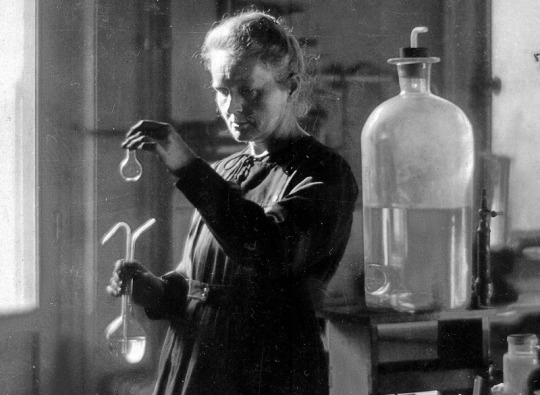
Maria Salomea Sklodowska was born in Warsaw, Poland on November 7th, 1867. Being the youngest of 5 children and her parents both being teachers, their living circumstances were rough due to the family losing their money and land during the Polish national uprisings, specifically the January Uprising of 1863. Despite these shortcomings, Maria and her family did their best to survive and peruse academics. Her father Wladyslaw taught physics and math, but due to the Russians eliminating laboratory schools he taught Maria and the others at their home. Wladyslaw lost his job, and bad investing left the family no choice but to house lodging boys for an income. Her mother Bronislawa died of Tuberculosis in 1878, Maria was just 10 years old. She started attending a boarding school shortly after, and once she left the school her oldest sibling died of typhus. She became a governess as her father could not support her anymore, and due to her being a woman she could not peruse a higher education in Poland. Her sister Bronislawa married a Polish physician and they offered Maria to come to Paris with them. She agreed but did not have the funds to pursue an education there, so she continued working as a governess and tutor into she finally managed to move to Paris in 1891.
She enrolled at Sorbonne University studying mathematics and physics, and meet her husband Pierre Curie a physics professor in 1894, they got married and Maria adopted the French localization of her name Marie, her name now being Marie Curie. The two shared a deep passion for learning, the both of them became researchers at the School of Chemistry and Physics in Paris. Together they researched uranium's invisible rays, which lead Marie to become interested in radioactivity. She found that Pitchblende, a mineral with uranium in it was more radioactive than uranium itself, which lead to her discovering a completely new chemical element. Using this mineral and dissolving it in acid allowed the different elements to separate, which is how she found the element Polonium. Besides polonium, she also discovered a liquid that separated from the Pitchblende, another new element. Pierre and Marie published their findings and called this new element radium. Due to the both of them working with chemicals, they both fell ill from radiation sickness, despite this Marie went on to get her Doctorate in Science in 1903. She also was awarded a Noble Prize in Physics the same year for her discoveries and later another Noble Prize in Chemistry for her work with radium in 1911. With Pierre passing in 1906, she took his position of Professor of General Physics, being the first woman in the position. She also was appointed to Director of the Curie Laboratory of the University of Paris in 1914.
Her work with radiation helped develop X-ray technology which helped soldiers in WW1, and her work caused U.S. President Hoover to donate $50k to help keep radium available. After WW1 ended, she went back to lab work and sadly passed away from Aplastic anemia due to radiation exposure on July 4th, 1934. She gained a plethora of awards and achievements throughout her life. Although I only covered a few, here are all the awards she won.
1903: Noble Prize in Physics & Davy Medal
1904: Matteucci Medal
1907: Actonian Prize
1909: Elliot Cresson Medal
1910: Albert Medal
1911: Noble Prize in Chemistry
1921: John Scott Legacy Medal & Premium, Willard Gibbs Award, and the Benjamin Franklin Medal
For more information of Marie Curie:
If you're interested in Polish history might I suggest checking out:
Time Log: 01:10:17
4 notes
·
View notes
Text
hey kid, youre new around here, so its okay if you dont know how this school runs, but the shit that they tell you, in orientation, is nothing more than lesson number one!
hey kid, no need to worry, i can let you in on what its all about, theres a couple more things, on the down-down-low, you should know before you have to figure out,
a word to the wise, dont you dare make a fuss! asking for help shows youre not one of us!
a word to the wise, dont act like youve made it, failure will find you-admissions delayed it!
just cause you made it in, doesnt mean that youre done! a word to the wise: youve barely begun!
theres lots of little places to get lost in,
theres libraries that sprawl beneath your feet!
rooftops that nobody frequents, where secret societies meet,
theres ivy-wreathed arches and ivory towers, sun drenched verandas to study for hours!
but dont share what you find, hidden in tomes on the shelf,
a word to the wise: its every man for himself!
we're too advanced for second chances, theres a standard to maintain! every hall and dormitory, bearing some great philosophers name, so why should anybody here be impressed? who the hell are you to compete with the best? you better figure it out, and figure it fast, cause, word to the wise: filthy slackers dont last!
a word to the wise, the sons of lawyers and kings,
are taking your classes and appraising your rings!
a word to the wise: you better stay in your place! or dorm room doors will get slammed in your face! so if you arent upper crust, or youre a hair out of touch, a word to the wise: dont stand out too much! just try to blend in, buy a three-button suit, dont let on where it fits wrong!
join a club and gain acceptance- if you arent too exotic to belong! theres been a hundred years of students like us, and two or three of students like you, your ambitions might burn, but tradition runs deep, a word to the wise: look before you leap!
the phaethon prize is a highly competitive award, given to a single senior in each graduating class. honoring the memory of arthur phaethon, who, during his undergraduate years, took it upon himself to isolate the radioactive elements produced by the decay of a pitchblende. while the project claimed his life just shy of his graduation, today the phaeton prize is awarded to undergraduates who display similar tenacity, independence, and intellectual acuity, distinguishing them as the best that ardess university has to offer.
the nominees for the phaethon prize for the current graduating class are: quincy cynthius martin, vincent aurelius lin, ambrose wellington bassford, beatrix valeria campbell, david elizabeth kawthorne, drew r...
theres a certain subset of exceptional, with a bulletproof reputation! earn the right prizes, the school recognizes your usefulness more with each commendation!
so if you get the chance in your senior year, why not give it everything youve got? why not whitewash your flaws, with a phaethon shine? a word to the wise:
your life's on the line!
ill let you in on a secret, kid, dont let this place eat you like me!
just try to fit in, learn to bear it and grin, be the paragon it needs you to be!
a word to the wise: never let yourself rest! they can try to despise you, but not your success!
a word to the wise:
its no use getting through, when everyone else expects nothing from you!
a word to the wise:
just be patient and wait, theyll have to give in once you do something great!
dont crack up, dont break it, youre not great, so fake it, dont falter or show fear, act like you belong here! dont crack up, dont break it, youre not great, so fake it, dont falter, or show fear, act like you belong here! dont crack up! dont break it! youre not great! so fake it! dont falter! or show fear! act like you belong here!
if you dont look the part, or cant keep your thoughts straight, better prove yourself soon, or head back through that gate!
a word to the wise:
Keep your eyes on the prize!
Keep your eyes on the prize!
Keep your eyes on the prize!
Keep your eyes on the prize!
Keep your eyes on the prize!
Keep your eyes on the prize!
#top 10 songs thatve been stuck in my head for like 10 hours straight#i went to bed woke up and this was still stukc in my head . hashtag autism
4 notes
·
View notes
Text
Marie Curie- The Woman who Changed the World
Marie Curie was born on November 7, 1897. A Nobel laureate, she is well known for being the first woman to receive such award. Her and her husband Pierre Curie were the scientists to discover both radium and polonium.
Noticing that uranium located in a substance called pitchblende was much more radioactive than normal uranium, the Curie’s began to experiment on the substance. Through hard work and many hours of experimentation, large quantities of the substance eventually lead to the discovery of polonium. Eventually, they were also able to isolate radium. Her contributions to science cannot be understated.
Her research has led to the creation of various X-ray machines. During World War I, she worked on the front lines, functioning the machines to help injured soldiers. An additional type of X-ray can see moving parts in the body, like the heart pumping.
She sacrificed her whole life to the study of these elements. Unknowing at the time of the dangers of radioactive materials, she died of leukemia, probably as a result of prolonged radiation exposure. Her research, however, has saved countless lives.
#marie curie#pierre curie#nobel laureate#nobel prize#nuclear science#nuclear radiation#nuclear physics#radioactivity#radiation#nuclear#nuclear breakdown
3 notes
·
View notes
Text
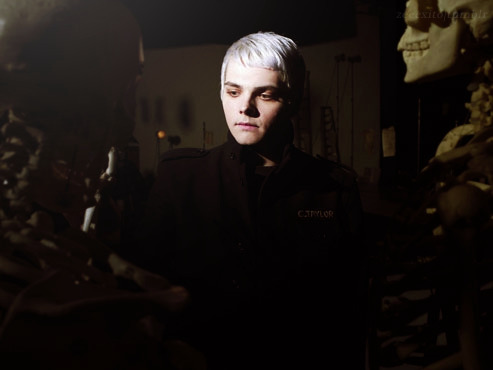
Shining, glowing, radiant!
Gerard Way : an intensely radioactive metallic chemical element that occurs in combination in minute quantities in minerals (such as pitchblende or carnotite), emits alpha particles and gamma rays to form radon, and is used chiefly in the treatment of cancer and in radiographic devices.
#<3babygirl made out of a toxic substance<3#my beloved#gerard way#the black parade#my chem#tbp era#you must felix your heart#my chemical romance#mcr
10 notes
·
View notes